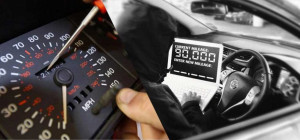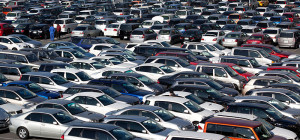 If you were to look down from an airplane at a typical American city, you might think that cars and humans are inseparable. We seem to be everywhere at once, and driving a car is a social and cultural mainstay for almost all American adults of driving age. But that all may be changing with the advent of the driverless car.
If you were to look down from an airplane at a typical American city, you might think that cars and humans are inseparable. We seem to be everywhere at once, and driving a car is a social and cultural mainstay for almost all American adults of driving age. But that all may be changing with the advent of the driverless car.
A New Era
Today, the automotive industry is valued at roughly $1.7 trillion dollars. That’s an amount that is almost certainly going to be significantly impacted by the introduction of driverless cars. Will this mean that traditional car manufacturers will have to adapt and begin making their own driverless cars, or else succumb to larger auto manufacturers who can adapt? The many different financial dynamics at play here make the future of the car a very interesting one, to say the least.
Also, because of government safety regulations, there is a good chance that navigation, automation and tracking technology will have to meet certain standards. These new requirements may create new influences in the automotive market, meaning that bringing a new model from concept to production may take longer and involve more processes.
New Convenience
Wouldn’t it be nice to simply tell your car where you want to go and then sit back and let it take you there? It’s not that easy just yet, because the self-driving cars being made today aren’t sophisticated enough to go on full autopilot. However, Tesla does offer an “autopilot” feature, but you’re going to have to pay $40 per month extra for it.
It’s being offered more as a creature comfort with a little side of safety. But among those who have been driving the new Tesla cars equipped with autopilot, many have come to rely on it. Audi, on the other hand, has angled more for the performance capability of driverless cars, showcasing their new A7 sedan at select raceways. All of this raises the question, “What will drivers want more from driverless cars: safety or performance, or both?”
Consider the amount of people who cannot get around because of physically limiting disabilities like blindness and paraplegia. The advent of automated cars that drive themselves could mean an entirely new world for disabled people, suddenly opening up the world to them. Would this mean that there would be a broader, wider market of people for auto manufacturers to being targeting in marketing campaigns? Imagine a car that is expressly made for the purpose of aiding disabled people, complete with accessibility modifications and state-of-the-art passenger accommodations.
New Obsolescence?
With all of the great convenience that automated cars might bring, what can be said about current transportation equipment and personnel that might suddenly become useless? Some forecasts like this one paint a fairly dismal picture if you’re a truck driver – automated trucking could mean millions of lost jobs. But as a replacement for the trucking labor, there may well be an entirely new maintenance and operations job market to serve those who become unemployed due to obsolescence.
The saying “adapt and improve” seems relevant here, as we will have to find ways to adjust to this new transportation landscape. Even though some doors may close for those of us who have made careers in industrial trucking, there may also be huge opportunities for growth in skilled labor markets and manufacturing. Other factors like insurance costs and legal implications reveal yet more complexity. Only time will tell if the driverless car completely revolutionizes the auto industry or if they are just a flash in the pan that will die out as quickly as they came to be.







